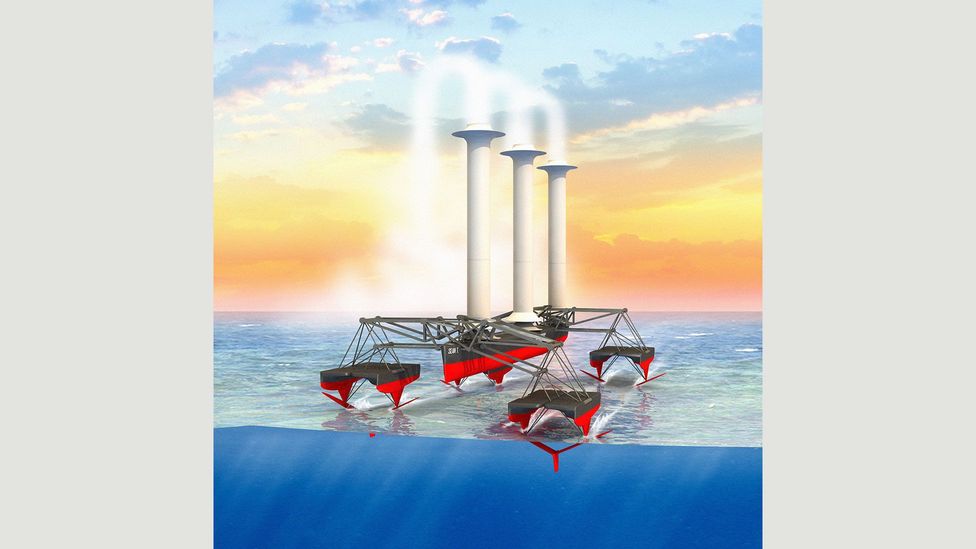The profound nexus between anthropogenic climate change and oceanic dynamics has garnered unparalleled attention in contemporary discourse. One innovative approach that has emerged is the concept of “cloud seeding” from maritime vessels, a method that seeks to exploit the atmospheric interactions facilitated by ocean waters to ameliorate climate change phenomena. This article delves into the intricacies of this concept, examining its mechanisms, potential benefits, associated risks, and the broader implications for climate intervention strategies.
Understanding Cloud Seeding
Cloud seeding, traditionally utilized in meteorology to enhance precipitation, involves the introduction of specific particulates into the atmosphere to stimulate cloud condensation. This technology typically employs substances such as silver iodide or sodium chloride, which serve as nuclei around which moisture can accumulate, leading to increased rainfall or snow. The advent of utilizing maritime vessels for this technique presents an innovative opportunity to explore a dual-function model: addressing immediate weather phenomena while concurrently targeting long-term climate issues.
Marine Aerosol Generation
Ships, particularly those in vast ocean expanses, have the inherent capability to generate marine aerosols, tiny particles essential for cloud formation. When sprayed into the atmosphere, these aerosols can enhance albedo—the reflective capacity of clouds—subsequently influencing the Earth’s energy balance. Marine vessels can generate these aerosols naturally through their wake turbulence; however, intentional seeding could amplify this effect. The process necessitates a careful selection of particles to ensure that they effectively catalyze cloud formation without introducing detrimental side effects.
Potential Climate Mitigation Benefits
The foremost advantage of deploying ships for cloud seeding is the potential to reflect sunlight away from the Earth’s surface, thus moderating global warming. By enhancing the cloud cover over specific regions, ships could effectively increase the Earth’s albedo, resulting in a cooling effect. This could be particularly beneficial in combating the heat extremes that are becoming more prevalent due to climate change.
Moreover, the localized cooling effects from cloud seeding could provide respite to vulnerable ecosystems and agricultural sectors that are directly impacted by rising temperatures. Coastal regions that heavily rely on stable climatic conditions for agriculture could benefit significantly from enhanced precipitation patterns resulting from maritime cloud seeding interventions.
Regional Climate Control and Ocean Health
In addition to climate mitigation, another distinctive advantage of this technique is the potential for regional climate control. Cloud seeding could result in more stable weather systems, which in turn could mitigate the severe weather events increasingly associated with climate change, such as hurricanes and extreme droughts. Furthermore, management of regional climates could enhance ocean health by preventing thermal stress on marine ecosystems, thus promoting biodiversity and supporting sustainable fishing practices.
Ethical and Environmental Concerns
While the prospects of cloud seeding from vessels offer an innovative avenue for climate intervention, it is not devoid of ethical and environmental dilemmas. The introduction of particulates into the atmosphere raises complex questions regarding unintended consequences. For example, changes in regional weather patterns could lead to adverse effects elsewhere, sparking potential geopolitical disputes over weather territory and water resource allocations. Additionally, the long-term implications of artificial cloud seeding on atmospheric chemistry remain largely unexplored, posing risks that warrant comprehensive global scrutiny.
Regulatory Frameworks and International Collaboration
Effective implementation of cloud seeding initiatives necessitates robust regulatory frameworks that encompass environmental safeguards and oversight mechanisms. Comprehensive international regulations are crucial, as climate change is a transboundary issue necessitating collaborative efforts across nations. The formation of agreements akin to the Paris Accord, tailored specifically to geoengineering methods, could facilitate sharing of knowledge, technologies, and methodologies while preserving ethical standards.
Partnerships between scientific communities, governmental bodies, and non-profit organizations could foster innovative approaches to establishing governance structures that address the multifaceted aspects of cloud seeding. Such collaborative arrangements would be essential for sharing the socio-economic benefits derived from these initiatives while ensuring adherence to international environmental conventions.
Conclusion: A Complex Road Ahead
Seeding the skies from the sea represents a fascinating and contentious frontier in the realm of climate change mitigation. The potential to harness maritime vessels for cloud seeding offers a unique opportunity to not only combat global warming but also promote climate resilience in vulnerable regions. However, this technological intervention must be approached with caution, bridging scientific inquiry with ethical considerations and international cooperation. As further research unfolds and our understanding of these dynamics deepens, the pursuit of responsible and equitable climate solutions will undoubtedly determine the viability of such innovative nebulous interventions on the horizon.












